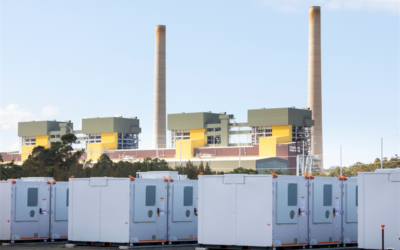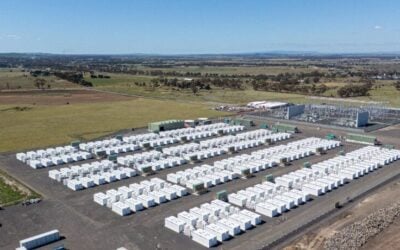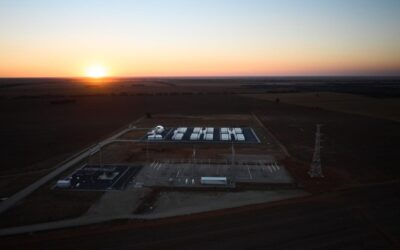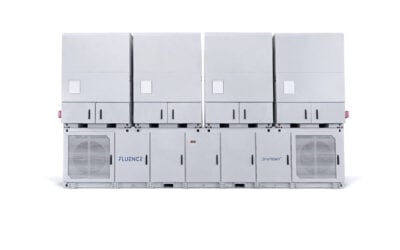Interest in energy storage at customer sites is well documented to be growing in Australia. Image: Solarquip.
As more and more Australians look to energy storage solutions, a set of installation guidelines from the Clean Energy Council (CEC) has been released for industry and consumers which will be mandatory for installers accredited by CEC schemes by October.
The document provides interim guidance, amalgamating and also updating all existing standards for on-site batteries, with aims to grow to encompass product innovations and developments as they come. It will be in place until new standards have been formalised.
The guidelines draw on existing standards on the testing, commissioning, maintenance and repair of batteries, as well as the layout, arrangement and installation requirements and safety and design of various power systems. It unites all of the relevant requirements for storage installations into one document, providing a clear guideline for satisfying minimum safety standards.
The standardisation is more economical for the industry and individual installers who will be able to reference and abide by a single format; streamlining interactions with overarching health and safety standards, making compliance in the long run both cheaper and more efficient.
Try Premium for just $1
- Full premium access for the first month at only $1
- Converts to an annual rate after 30 days unless cancelled
- Cancel anytime during the trial period
Premium Benefits
- Expert industry analysis and interviews
- Digital access to PV Tech Power journal
- Exclusive event discounts
Or get the full Premium subscription right away
Or continue reading this article for free
“
Everyone is excited by the potential of a future created by a combination of renewable energy, home energy storage and smart energy technologies. The new guidelines are an important step in making that vision a reality.”
Technology and market changing at a rapid rate
In Australia, the long and predictable sunshine hours, as well as the dwindling feed-in tariff (FiT) scheme means that solar PV and storage are increasingly popular. The guidelines are indicative of the Australian energy storage revolution kicking-up a gear as the new guidance aims to fill a gap not previously regarded by existing guidelines as new products reach the residential and commercial market alike. In fact, these attributes, which make Australia an ideal market for solar storage, mean that solar solutions are more competitive anyway than their fossil fuel counterparts. Energy-Storage.News has covered a steady stream of product launches and trial projects entering the market in recent months, while GTM Research identified the potential for the residential energy storage market to reach 132MW a year by 2020.
Although reports of accidents or damage caused by improperly installed storage systems are few and far between, there is concern within the industry that the rush to meet surging demand could result in such instances.
As energy storage systems are a relatively new and emerging market, battery technology is experiencing development and change at a rapid rate. It is no longer pragmatic to dedicate a single standard to a single battery chemistry, so the new standard attempts to accommodate the wide variety of battery chemistry in a single guide, which is designed to be dynamic in that it will grow and be enhanced and updated alongside industry developments.
For obvious reasons, it is pivotal that all these energy storage installations are done correctly. The CEC’s guidelines will be phased-in and then compliance will be mandatory from this October for installers who are accredited for battery installation by CEC – there are over 4,500 CEC accredited installers in Australia. While it is not necessary that installers qualify under the scheme, any solar power system that wishes to benefit from government incentives must be installed by a professional accredited with the CEC.
CEC says the document will help installers and their customers to keep pace with rapid developments in technology.
Creating a ‘common language’ for industry and consumers alike
Similar measures have been adopted by other regions which are keen to foster a serious energy storage market. In 2014, German solar industry association BSW Solar created a report on safety for lithium-ion battery based residential storage. Last year In the UK, a similar initiative was developed after industry bodies called for codes of best practise in selling and installation of PV systems paired with storage; creating a ‘common language’ for consumers and industry professionals alike.
The momentum of guidelines for battery storage is indicative of the continued production and use of such products. The better understood and safer they are, the more likely that investors and lenders will put faith in the technology. A universal set of guidelines that lay out the risks of technologies could also serve as significant mitigation for investors. In addition, a single standard allows competing manufacturers to be aligned under a unified definition of safety and risk. So not only do the guidelines help to alleviate technical issues and safety issues, but they could also create an enhanced sense of clarity and certainty for the industry.
Energy storage has come a long way in recent times, in Australia and other countries worldwide, with the introduction of home battery solutions such as Tesla’s Powerwall and the Z-Cell, a flow battery aimed at the residential market produced by an Australia’s Redflow. The guidelines address the fact that it’s not just the installation of the battery itself that needs attention; it is also how it interacts with other elements of a solar power system, including inverters.
Furthermore, in Australia last year a report compiled by the Commonwealth Scientific and Industrial Research Organisation (CSIRO) detailed the safety issues for storage systems of 1-200kWh. At that time, there were already standards in place for battery installations used in off-grid installations, including on residential level. However, the rapid pace of the technological trends within the energy storage space means that these often have to be updated and replaced.
The latest standards are cited by CEC chief executive Kane Thornton as being the first comprehensive set of robust installation guidelines for battery storage in Australia.
“These guidelines have been established after extensive consultation over the past year and build on the most comprehensive study of battery storage safety in Australia that we undertook in partnership with CSIRO in 2015,” Mr Thornton said.
“Everyone is excited by the potential of a future created by a combination of renewable energy, home energy storage and smart energy technologies. The new guidelines are an important step in making that vision a reality.”
CEC’s guidelines can be downloaded here.





